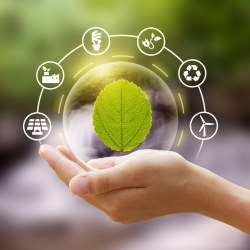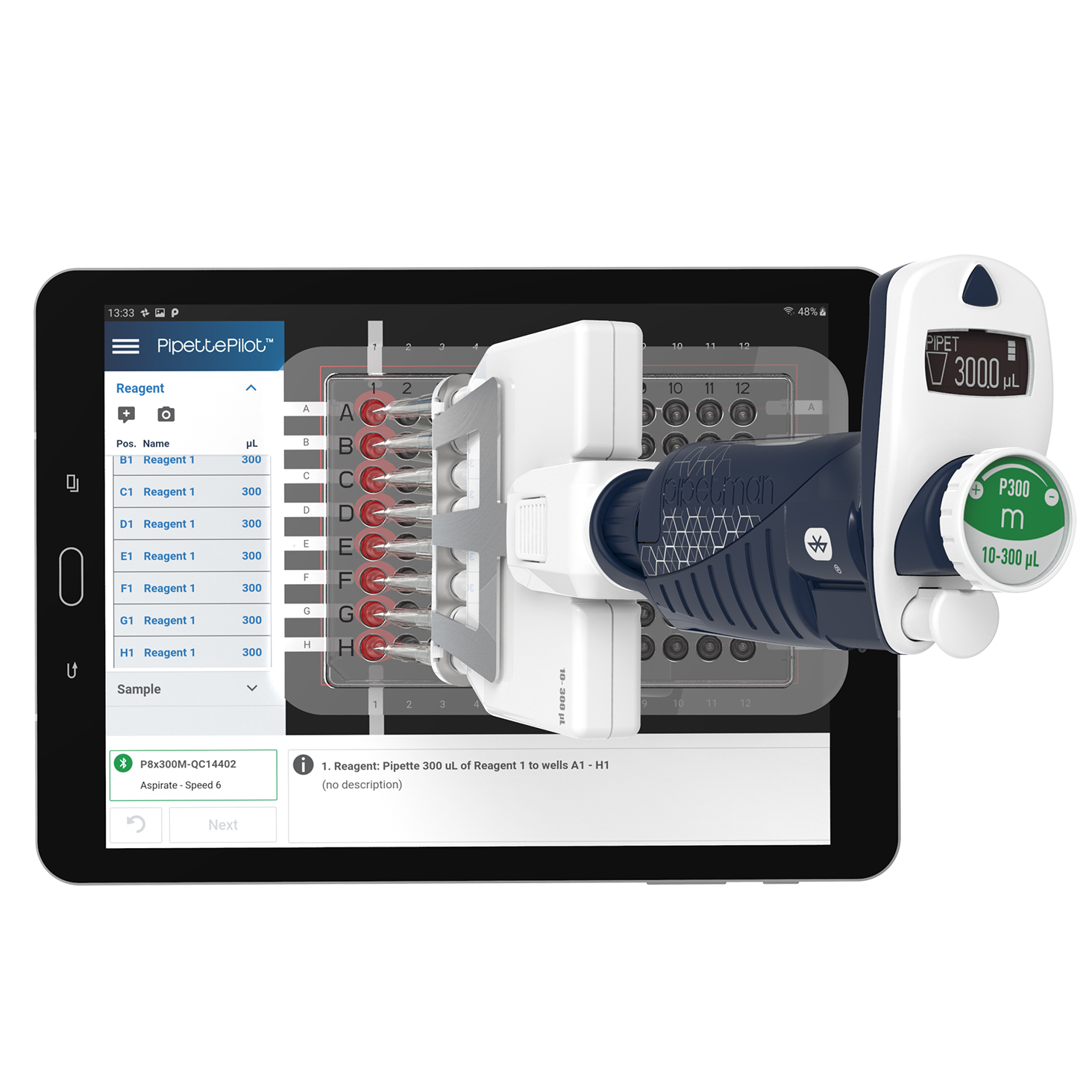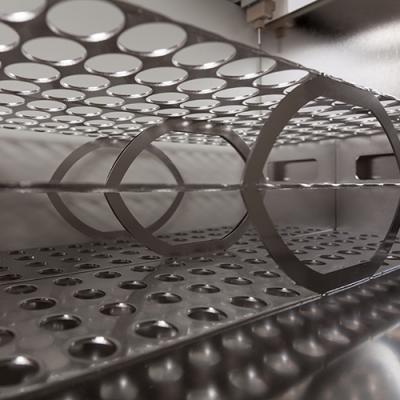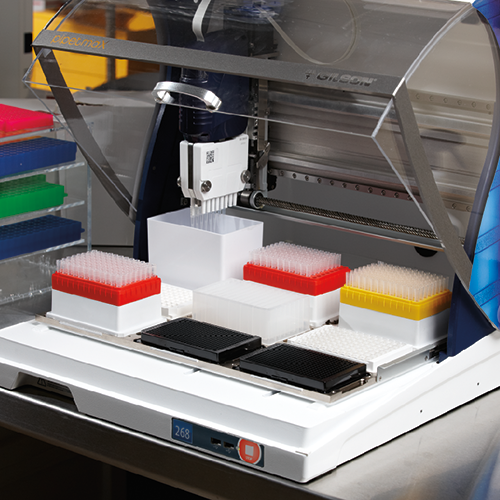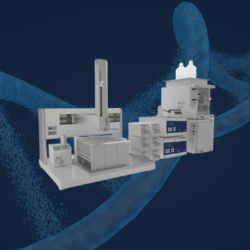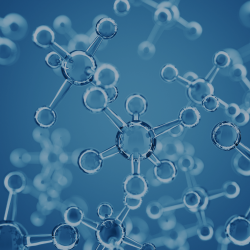Many organizations in the pharmaceutical and biotechnology sector are steering their operations
toward sustainability. The intensive use of resources and significant waste generation by such
businesses is driving the search for environmentally friendly ways of working — labs, in particular,
are striving to improve, as they consume an astonishing 10 times more
energy and four times more water than a typical office.
Adding to their environmental impact, labs must deal with a plethora of chemical waste — a byproduct
of their everyday operations. The purchase and disposal of chemicals represent not just a hefty
financial burden, but also a substantial environmental impact. Chemicals can contaminate water
supplies, affect air quality, and harm local ecosystems, making their management a critical aspect
of lab sustainability.
It is becoming increasingly clear that enhancing sustainability in the lab is not just about meeting
regulatory requirements — it's a necessity to reduce environmental damage. Labs themselves can adopt
sustainable processes by implementing more efficient and productive workflows.
In this article, we delve deeper into the issue of chemical waste in labs and identify key areas
where labs can significantly improve their sustainability.
Why Reduce Chemical Waste?
When discussing sustainability in labs, it's impossible to ignore the topic of chemical waste.
Broadly defined, chemical waste encompasses the unavoidable residues and leftovers from lab
processes and the unnecessary consumption of reagents, solvents, and buffers, often due to
unoptimized procedures. Additionally, excess chemicals that degrade or expire because they are
stored improperly or purchased in unnecessarily large quantities can also contribute to chemical
waste.
Reducing chemical waste provides numerous benefits:
- A healthier ecosystem owing to less contamination at disposal sites
- Safer lab conditions for workers due to lower quantities of hazardous
substances
- Lower disposal costs from reduced waste handling and transportation leading to
process optimization
The necessity of minimizing chemical waste is not a novel concept. Back in 1998, the 12 Principles of Green Chemistry was published — a set of guidelines
developed to spur scientists towards more environmentally friendly chemical processes and products.
The principles advocate for waste prevention, sustainable chemistry, and design for degradation,
among other environmentally responsible practices.
Applying the principles of green chemistry can have a transformative effect on labs. By considering
and implementing measures to reduce environmental impact, labs can significantly curb their
production of chemical waste for more sustainable and safer working environments.
5 Ways to Improve Lab Sustainability
Sustainability in labs involves a multitude of considerations, from turning off lights and equipment
when not in use to minimizing water consumption. The impact of such measures accumulates over time,
leading to significant energy savings and a reduced environmental impact.
In the quest for improved sustainability, however, it's essential to delve deeper and explore less
discussed — yet equally crucial — areas that can offer tangible improvements. We examine five of
these areas below: supplier selection, product lifespan, instrument choice, and care, digitization,
and automation.
- Supplier Selection
An any lab, the sheer diversity of instruments and consumables can make supplier selection a
critical element of overall sustainability based on their design choices, environmental
compliance practices, and sourcing strategies. Sustainability-minded suppliers drive change by
designing greener products that use less energy, produce less waste, or are made from recycled
or easily recyclable materials. They will also adhere to stringent environmental standards to
minimize pollution and waste during manufacturing and ensure responsible sourcing of raw
materials, mitigating the environmental impact of their supply chains.
When choosing suppliers, labs can prioritize those that share their commitment to sustainability,
meaning labs not only lessen their direct environmental impact but also influence the broader
supply chain to adopt greener practices. To make it easier to identify a sustainable supplier,
companies and organizations exist to evaluate and rate the sustainability practices of
suppliers. EcoVadis, for instance, grants
sustainability awards that signify a company's dedication to environmentally friendly
processes along with social and human rights, ethics, and responsible purchasing. A
testament to this approach is the recent recognition of two
Gilson manufacturing sites in France that were awarded EcoVadis medals for their
Corporate Social Responsibility (CSR) practices, underscoring their dedication to
sustainability.
Labs can also consider how much plastic packaging your products, such as pipette tips, come with.
Gilson, for example, offers refill options or packaging that use less plastic, including reload
packs, blister refills, and tower packs that do not impact analysis and have the same
characteristics (sterilization, etc.).
Two
Gilson Manufacturing Facilities Receive Sustainability Awards
Sustainability has been integral to Gilson’s
objectives for the past 75 years. The company’s
conscientious product design and manufacturing
is part of its commitment to evaluating and
improving its Corporate Social Responsibility
(CSR) process. The EcoVadis medals are a
significant accomplishment for Gilson.
Learn More
- Product Lifespan
While some lab plastics are necessary for maintaining experimental integrity, like single-use
pipette tips to avoid contamination, not all lab plastic has to follow this one-and-done
approach. Other products in labs can often be sterilized and reused, depending on the durability
and longevity of the materials used in their construction. However, you should always refer to
manufacturer recommendations.
Unfortunately, the focus on durability is often overlooked. Products, therefore, require
replacement more often, which not only incurs higher financial costs but also leads to more
significant waste, adding to the environmental burden.
To improve their sustainability and reduce waste, labs can prioritize durable products with
extended lifespans, which reduces the frequency of replacement and keeps items out of landfills
for longer. Initiatives such as trade-in programs can also be a significant boost. Gilson offers
a trade-in program for broken pipettes – no matter the brand, for example, refurbishing them for
reuse and giving them back to communities with less access to scientific tools. Customers
trading in broken pipettes receive discounts on their new purchases as an incentive to recycle.
Additionally, while plastic is prevalent in labs, it's not always the only option. Autoclavable
glass products can be a sustainable alternative in many instances, enabling sterilization and
reuse while reducing the need for disposable plastic.
- Instrument Choice and Care
Similar to your products, the choice of instruments in your lab significantly influences its
sustainability. In fact, lab instruments have direct implications for experiment efficiency and
resource consumption.
Instrument efficiency plays a crucial role in sample cleanup and purification workflows. Notably,
less efficient instruments often consume higher quantities of solvents, buffers, and other
reagents. For instance, to achieve a high product purity, a lower-grade column will need to
extend the run-time and increase solvent use, contributing to higher energy consumption and more
waste. Lower product recovery rates can also lead to more frequent experiment repetition,
thereby escalating the use of consumables and energy.
Just as critical as the choice of instruments is their care and maintenance. Neglecting to clean
or maintain instruments can risk experiment contamination, leading to re-runs and wastage.
Furthermore, poorly maintained tools tend to have shorter lifespans, causing delays in
experiments and costing more in the long run due to frequent repairs or replacements.
Investing in high-quality, durable instruments and ensuring regular maintenance is a win-win
solution for labs aiming for sustainability. Quality instruments last longer, reducing the
frequency of replacements, and perform better, leading to more efficient experiments and less
waste.
- Digitization
While many individual actions contribute to lab sustainability, addressing one widespread source
of inefficiency can have far-reaching effects — the lack of connectivity caused by analog
processes. In many labs, data is still recorded on paper, requiring manual transfer and
collation in different locations. Paper-based processes have multiple drawbacks, such as they:
- Consume unnecessary paper, contributing negatively to the environment
- Are time-consuming and prone to error, increasing the likelihood of
experimental re-runs
- Prolong overall experiment duration, thus reducing lab productivity and
efficiency
Failing to digitize your processes where possible can prevent your workflows from being
optimized. The subsequently longer experiments equate to higher energy consumption from
equipment and lab space, adding to your lab's carbon footprint.
Nowadays, many solutions exist to improve the ease of digital data collection and streamline
workflows, even for traditionally manual processes such as liquid handling. The key is to
explore areas where digitization can be introduced in your lab. For instance, technologies like
TRACKMAN® Connected reduce experimental re-runs by guiding
you through your manual pipetting processes, ensuring improved traceability, optimizing your
workflows, and creating reproducibility in your experiments. It also includes software that will
notify you when the system needs maintenance, or your pipettes are due for calibration.
Figure 1. TRACKMAN Connected Pipetting System.
- Automation
In lab experiments, the phrase "quality over quantity" resonates deeply, especially when
considering sustainability. Namely, the quality of your research outcomes can directly impact
the environmental footprint of your lab. Unsuccessful experiments — or those that don’t give you
the desired results — may require re-runs, leading to excessive consumption of consumables and
equipment.
Manual processes, a significant part of many lab operations, often contribute to experiment
inefficiencies. They are prone to operator error, increasing the likelihood of needing to repeat
experiments. Moreover, manual procedures can lead to inconsistencies in results due to
inter-operator differences, thereby demanding further experiments for confirmation.
A practical solution to mitigate this issue lies in automation. Implementing automated
instruments leads to more robust protocols and standardized procedures, significantly reducing
errors and improving consistency. Labs can therefore minimize the need for experiment re-runs,
reducing waste generation and energy consumption.
Sustainable Processes Benefit All
It is more important than ever that labs do their part in reducing their environmental impact to
support the ongoing global focus on environmental conservation. Abundant opportunities to optimize
the sustainability of lab processes exist. Any movements toward progress will help us to have a
smaller ecological footprint, reduce expenses, and improve productivity and workflow efficiency.
Every step taken to enhance sustainability, no matter how small it may seem, is a responsible move
and a step in the right direction to ensure that we protect and preserve our environment for future
generations. Whether it’s refining supplier selection, improving experiment efficiency, extending
product lifespan, choosing and maintaining instruments wisely, or embracing digitization and
automation, every initiative counts.
Learn more about the steps Gilson takes to improve CSR through
more sustainable processes.

















